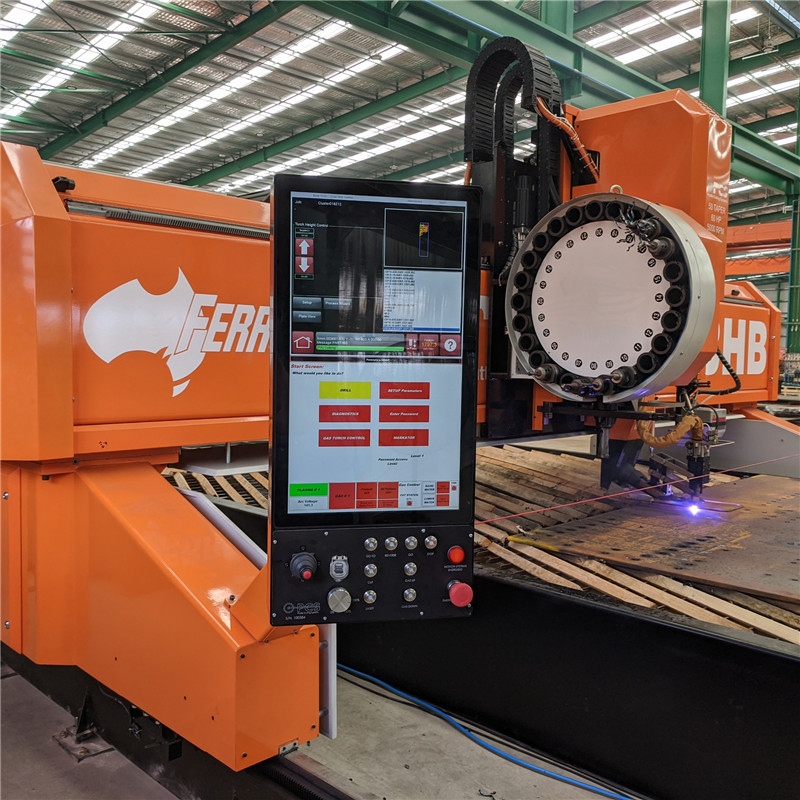Researchers at Binghamton University are exploring how Environmental Transmission Electron Microscopy (ETEM) can be leveraged to understand corrosion at an atomic level. Their findings could affect ongoing efforts both in the fields of corrosion resistance and clean energy production.
Image Credit: J.J. Gouin/Shutterstock.com Electrical Engineering Aluminum

The economic burden caused by repairing structures damaged by corrosion is estimated at around $2.5 trillion each year, according to the Institute of Corrosion. Developing methods to prevent or manage rusting could, therefore, have significant practical and economic benefits.
Alongside collaborators from the University of Pittsburgh and the Brookhaven National Laboratory, Professor Guangwen Zhou of Binghamton University has published new research outlining how aberration-corrected environmental electron microscopy (ETEM) can observe surface reactions of samples when exposed to water vapor under realistic pressure and temperature conditions. This allows greater understanding of surface phenomena in technologically relevant conditions.
Although corrosion, or rusting, is well understood across small lengths and time scales in the lab in order to reveal structural properties within an adlayer of condensed water, knowing what happens on an atomic scale under realistic conditions is harder to pinpoint.
The researchers focused on the reactions that occur between water vapor and aluminum in their research, looking for ways to control and prevent them.
The scientists were able to illustrate how water vapor directly induces these transformations of the metal lattice into oxides at room temperature, something that had never before been demonstrated at the atomic scale.
Perhaps the most significant outcome of the research is the discovery of a second layer that occurs underneath the anticipated aluminum hydroxide layer. The TEM clearly showed a crystalline Al(OH)3 outer layer and an Al2O3 amorphous inner layer, making up a passivating bilayer film on the aluminum surface.
This information could have significant implications for efforts to develop corrosion resistance in aluminum as well as other metals.
Dr. Zhou also hopes that studying how the oxygen and hydrogen atoms in water react with metals could create new breakthroughs in clean energy. Aluminum has been suggested for use in hydrogen storage onboard vehicles, and investigating how clean H2 could be produced from the reaction between aluminum and water at ambient temperature could have immense repercussions.
These potential implications have led to sustained investment by the U.S. Department of Energy into Zhou’s work.
(No date a) Atomistic mechanisms of water vapor–induced surface passivation - science. Available at: https://www.science.org/doi/10.1126/sciadv.adh5565 (Accessed: 12 December 2023).
Kocher, C. (2023) New research examines corrosion on atomic level - binghamton news, News - Binghamton University. Available at: https://www.binghamton.edu/news/story/4670/how-does-corrosion-happen-new-research-examines-process-on-atomic-level (Accessed: 12 December 2023).
Admin (2021) The effects of corrosion, Institute of Corrosion. Available at: https://www.icorr.org/effects-of-corrosion/#:~:text=Fundamentals%20of%20Corrosion (Accessed: 12 December 2023).
Skyla graduated from the University of Manchester with a BSocSc Hons in Social Anthropology. During her studies, Skyla worked as a research assistant, collaborating with a team of academics, and won a social engagement prize for her dissertation. With prior experience in writing and editing, Skyla joined the editorial team at AZoNetwork in the year after her graduation. Outside of work, Skyla’s interests include snowboarding, in which she used to compete internationally, and spending time discovering the bars, restaurants and activities Manchester has to offer!
Please use one of the following formats to cite this article in your essay, paper or report:
Baily, Skyla. (2023, December 12). Using TEM to Uncover Aluminum Corrosion at an Atomic Level. AZoM. Retrieved on February 13, 2024 from https://www.azom.com/news.aspx?newsID=62298.
Baily, Skyla. "Using TEM to Uncover Aluminum Corrosion at an Atomic Level". AZoM. 13 February 2024. <https://www.azom.com/news.aspx?newsID=62298>.
Baily, Skyla. "Using TEM to Uncover Aluminum Corrosion at an Atomic Level". AZoM. https://www.azom.com/news.aspx?newsID=62298. (accessed February 13, 2024).
Baily, Skyla. 2023. Using TEM to Uncover Aluminum Corrosion at an Atomic Level. AZoM, viewed 13 February 2024, https://www.azom.com/news.aspx?newsID=62298.
Do you have a review, update or anything you would like to add to this news story?
In this interview, AZoMaterials speaks with Knauer about project management capabilities in OEM, customization abilities, as well as what makes Knauer OEM solutions unique.
Andrea Steck, Martius Cobo, Bruno Chencarek
In this interview, join Bruker as they describe how to improve battery production and performance, through the entire value chain, with the help of NMR.
In this interview, Sara Speak, the Industrial and Environmental Product Application Specialist at Veolia Water Technologies & Solutions, talks to AZoMaterials about the current challenges the food and beverage industry (F7b) faces in water management.
The VectorExtensometer U70 is for single variable gage length measurement.
The TempCHEK is a calibrated shrinkage device for precise heat-work measurement.
The Wafer XRD 300 is a integratable wafer Ooientation solution
The global semiconductor market has entered an exciting period. Demand for chip technology is both driving the industry as well as hindering it, with current chip shortages predicted to last for some time. Current trends will likely shape the future of the industry, which is set to continue to show
The primary distinction between graphene-based batteries and solid-state batteries lies in the composition of either electrode. Although the cathode is commonly changed, carbon allotropes can also be employed in fabricating anodes.
In recent years, the IoT is rapidly being introduced into almost all sectors, but it has particular importance in the EV industry.
AZoM.com - An AZoNetwork Site

Aluminum Extrusions Profiles Owned and operated by AZoNetwork, © 2000-2024